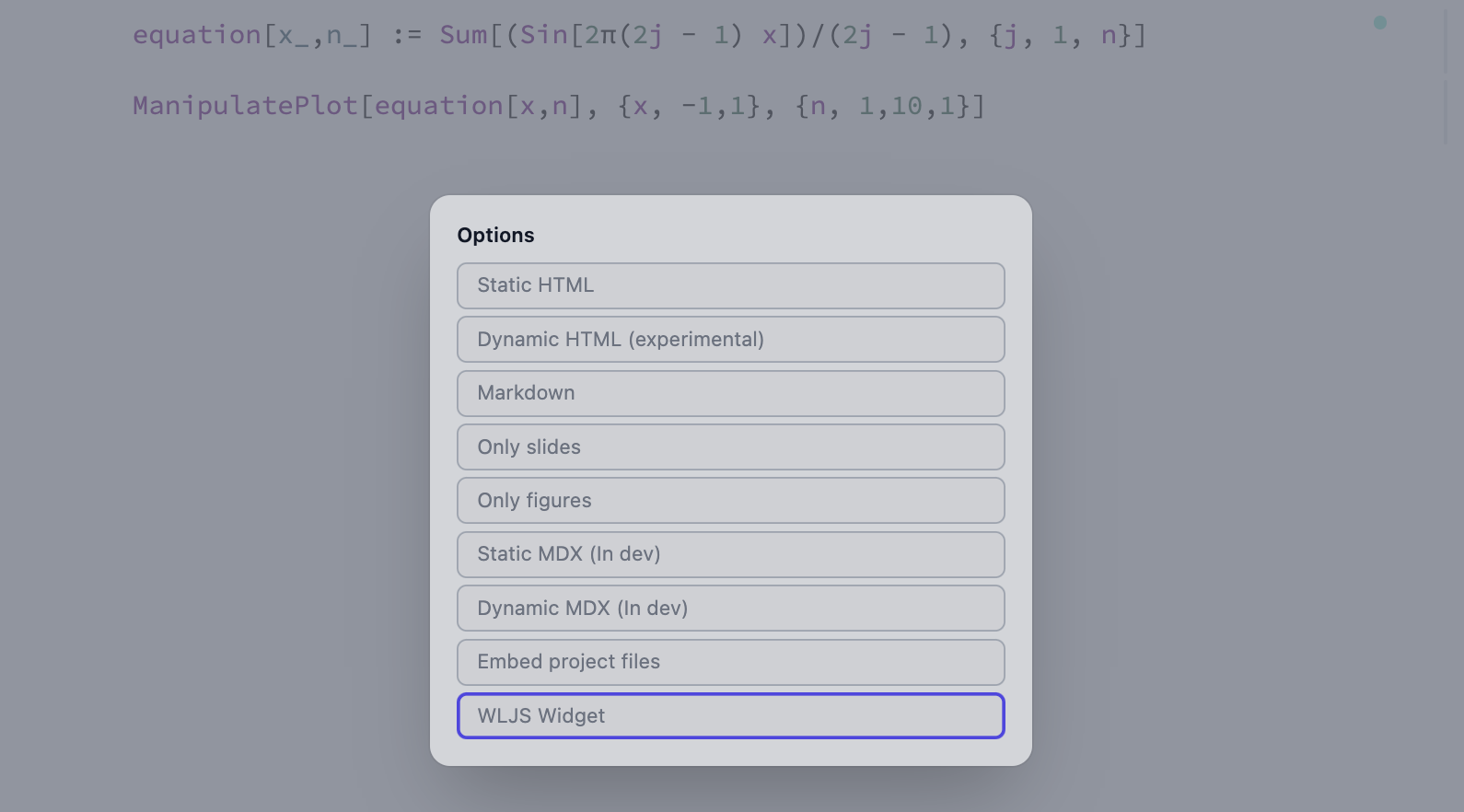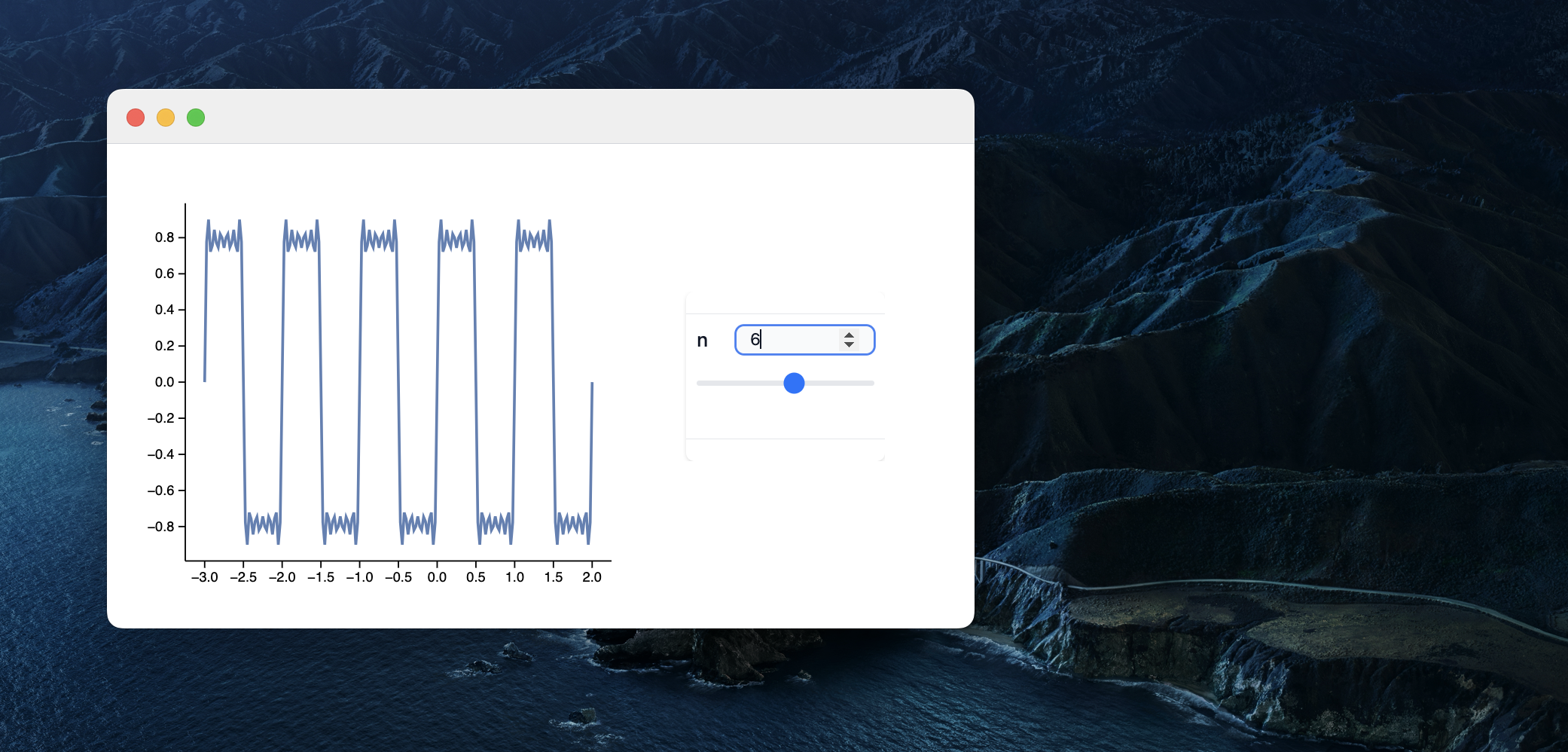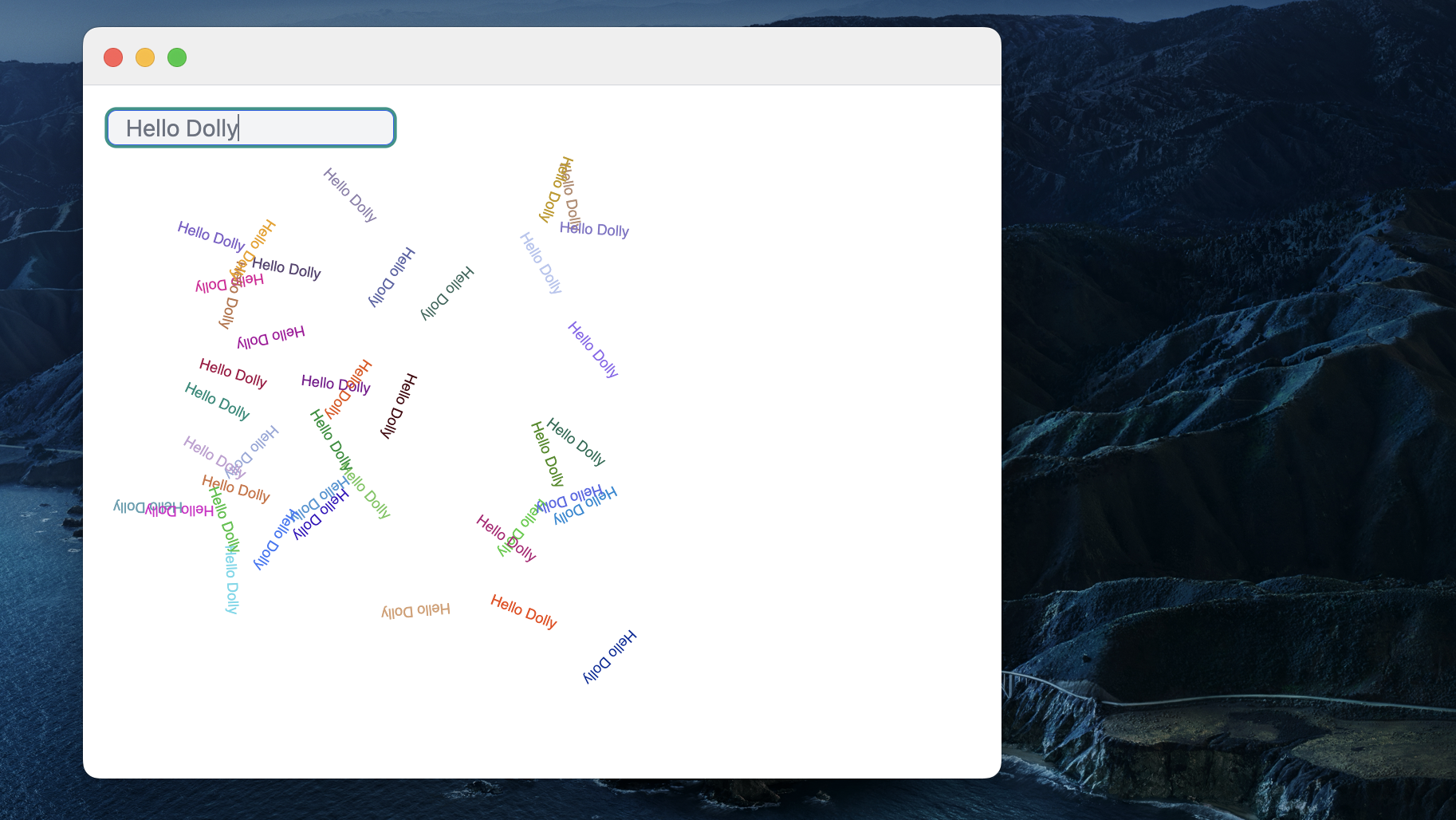Standalone Widgets
Write small useful apps using WL, JS, whatever with GUI and isolated resources
WLJS Notebook can be used as a runtime for standalone widgets. It is 1 window app, which uses the full capabilities of a normal notebook (similar to Wolfram CDF or LabView programs) and runs in the isolated generated context.
Widgets are shipped as a single executable file with .wlw extension. By changing this extension to .wln you can restore the source notebook.
How write a widget using notebook
In general you can thing about a standalone widget if it was an output of a single cell projected to a window. The following rules are applied in addition
- The default context (
$Context) of all symbols is randomly generated and will be unique for each running instance of your widget - All initialization cells will be executed automatically on the startup of the widget
- The output of the last input cell will be the window of your widget
- A widget will use the first available computation Kernel in your system
Apart from that the program for the widget is just a plain WLJS notebook. You can leave there cells for testing, debugging with no impact.
Example 1
Let's write the simples possible interactive widget
There is no need in evaluation of any of those cells for widget to work later
equation[x_,n_] := Sum[(Sin[2\[Pi](2j - 1) x])/(2j - 1), {j, 1, n}]
ManipulatePlot[equation[x,n]//Re, {x, -1,1}, {n, 1,10,1}]
Then you can simple press Share and locate Standalone Widget or WLJS Widget

As the result you will get .wlw file. Open it anytime on any machine with WLJS Notebook installed

Tips
Utilize WLX cells for the best customization of the GUI
When working with low-level Dynamics (dynamic symbols), define all dynamic symbols in System` context and scope them using Module or LeakyModule. This limitation comes from the bug of the context communication between the frontend and Wolfram Kernel. For example
Module[{
System`text = "Hello World"
},
Column[{
EventHandler[InputText[System`text], (System`text = #)&],
Graphics[Table[{
RandomColor[],
Rotate[
Text[System`text // Offload, RandomReal[{-1,1}, 2]],
RandomReal[{0, 3.14}]
]
}, {40}]]
}]
]
Here text is still unique for each instance due to lexical scoping of Module, while its context fixed to System.

Examples
See Widgets section in the top navigation menu